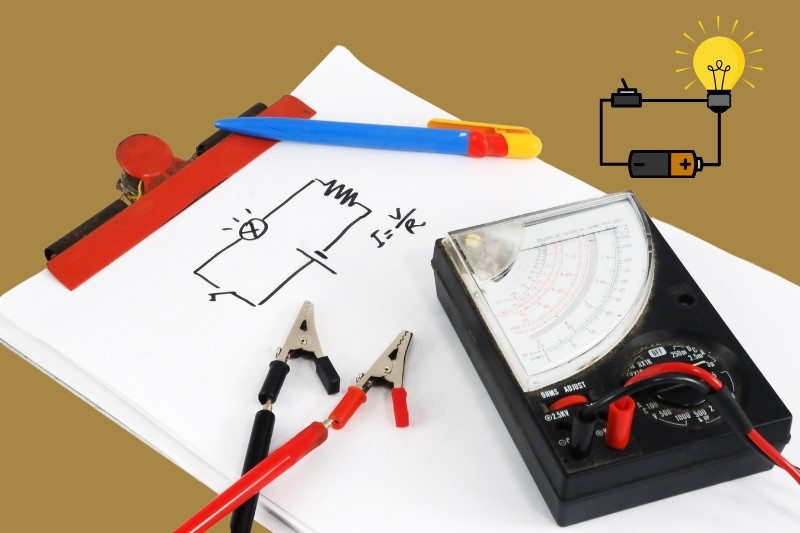When we study physics, we often categorize physical quantities into scalar and vector types. Understanding this classification helps us answer why certain quantities, like current and pressure, are considered scalars despite having both magnitude and direction.
Scalar vs Vector Quantities (An Overview):
Scalar Quantities
A scalar quantity is defined by its magnitude alone. Scalars have no directional properties, which means they are completely described by a single number and a unit.
For example:
- Temperature (e.g., 25°C): Here 25 is the magnitude and °C is its unit.
- Speed (e.g., 70 km/h): Magnitude = 70 and Direction = km/h
- Pressure (e.g., 101 kPa): Magnitude is 101 and Direction is kPa
Vector Quantities
A vector quantity, on the other hand, requires both magnitude and direction for its complete description. Vectors obey specific mathematical rules, such as vector addition and subtraction, and they are represented by arrows in diagrams.
Examples of Vectors:
- Velocity (e.g., 50 km/h east): Magnitude = 50, Unit = km/h and Direction = East
- Force (e.g., 10 N upwards): Magnitude = 10, Unit = N and Direction = upward
- Acceleration (e.g., 9.8 m/s² downward): Magnitude = 9.8, Unit = m/s² and Direction = downward
Necessary Conditions for a Quantity to Be a Vector
For a physical quantity to qualify as a vector, it must satisfy two key conditions:
- Magnitude and Direction: It should have a measurable size and specific orientation.
- Vector Addition Laws: It must obey vector algebra, such as the triangle law or parallelogram rule for addition.
If a quantity with direction does not follow these rules, it is not considered a vector, even if it has a direction.
Why Is Current a Scalar Quantity?
Electric current is the flow of electric charge through a conductor, measured in amperes (A). While current has both a magnitude and a direction (the direction of positive charge flow), it is still classified as a scalar quantity. Here’s why:
- Current Does Not Follow Vector Addition Rules
Unlike vectors, currents in two intersecting wires do not add up using vector algebra. Instead, their magnitudes simply combine algebraically. - Current Represents a Rate
Current is the rate at which charge flows per unit time through the cross-sectional area of a conductor. As this rate is defined without considering the directional properties of the flow, it is inherently scalar in nature. - Direction Is Conventional
The “direction” of the current is just a convention indicating the flow of positive charges. It doesn’t represent an actual spatial vector in the physical sense.
Is the Pressure a Scalar Quantity?
Like current, pressure is another example of a scalar quantity that might seem to have directional attributes. Pressure is defined as force per unit area (measured in Pascals, Pa). Despite being derived from force (a vector), pressure is scalar.
Why Is Pressure Scalar?
- Pressure Acts Equally in All Directions
In a fluid at rest, pressure applies equally in all directions at a given point. It doesn’t point in a single direction like a vector. - Pressure Doesn’t Follow Vector Addition
Similar to current, the sum of pressures in a system is scalar and does not require vector rules for calculation.
Example: Air Pressure
The pressure exerted by air (atmospheric pressure) around us is scalar because it acts uniformly on objects from all directions.
If pressure applied to a hydraulic jack causes the piston to move in a specific direction and lift a car, why is pressure still considered a scalar quantity?
Have you ever wondered why pressure, which can lift a heavy car by moving a piston upward, is still called a scalar quantity? Let’s uncover the reason behind this curious concept!
In this case (a hydraulic jack), when pressure is applied to the piston, it moves and lifts the car in a specific direction. However, the movement happens because the pressure creates a force on the piston, and force is a vector. The pressure itself does not have a direction; it just causes the force that moves the piston. This is why pressure is scalar, even though it can result in directional motion.
Final Thoughts
Electric current and pressure both highlight how physical quantities can have direction-associated properties without being true vectors. Their classification as scalars stems from how they are measured and combined in calculations. So,
- Current is scalar because it does not follow vector addition laws, even though it has magnitude and direction.
- Pressure is scalar because it acts equally in all directions and does not obey vector algebra.

